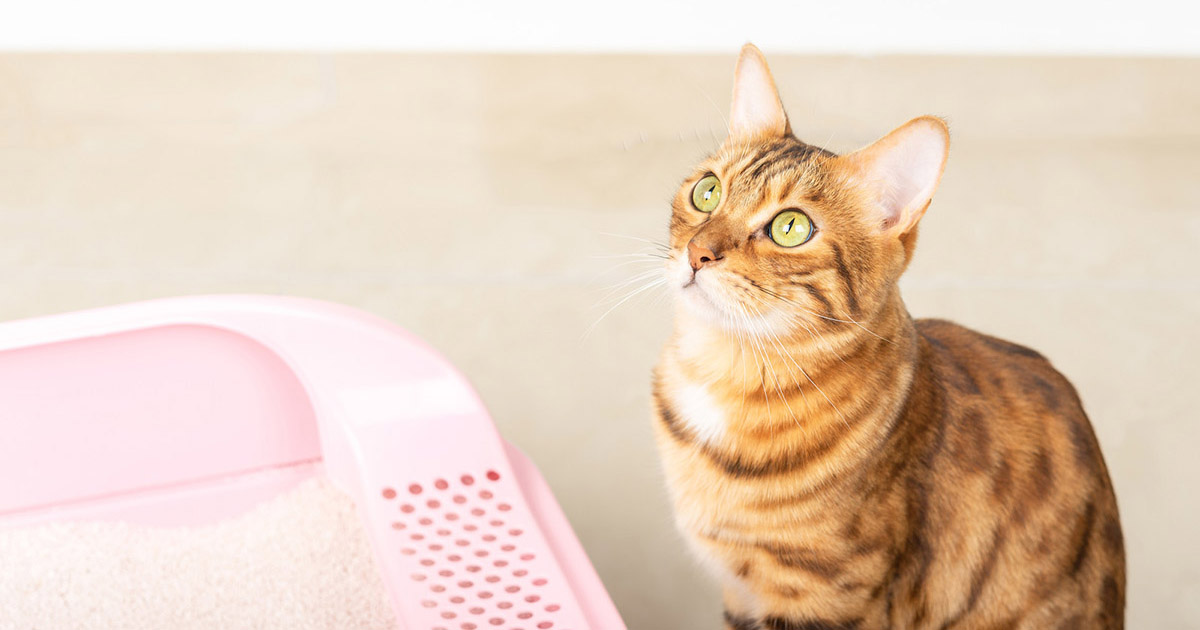Every person has his or her own theory on the subject of How to Dispose of Cat Poop and Litter Without Plastic Bags.

Introduction
As feline owners, it's important to bear in mind exactly how we get rid of our feline pals' waste. While it may seem practical to flush pet cat poop down the commode, this technique can have damaging repercussions for both the atmosphere and human health.
Alternatives to Flushing
Thankfully, there are safer and extra liable methods to throw away feline poop. Take into consideration the adhering to options:
1. Scoop and Dispose in Trash
The most common approach of disposing of cat poop is to scoop it into a biodegradable bag and toss it in the trash. Make certain to utilize a specialized trash scoop and throw away the waste without delay.
2. Usage Biodegradable Litter
Select eco-friendly pet cat clutter made from products such as corn or wheat. These litters are environmentally friendly and can be safely thrown away in the garbage.
3. Hide in the Yard
If you have a backyard, consider hiding feline waste in a designated area away from veggie yards and water sources. Be sure to dig deep enough to prevent contamination of groundwater.
4. Mount a Pet Waste Disposal System
Invest in a pet garbage disposal system especially made for cat waste. These systems utilize enzymes to break down the waste, lowering smell and environmental influence.
Health Risks
In addition to ecological issues, flushing feline waste can additionally pose health and wellness threats to human beings. Cat feces may have Toxoplasma gondii, a parasite that can trigger toxoplasmosis-- a potentially extreme disease, specifically for pregnant women and individuals with damaged body immune systems.
Environmental Impact
Flushing feline poop presents hazardous pathogens and parasites into the water supply, presenting a substantial risk to aquatic communities. These pollutants can adversely influence aquatic life and concession water high quality.
Final thought
Accountable family pet ownership expands past giving food and sanctuary-- it additionally includes appropriate waste administration. By refraining from flushing cat poop down the toilet and choosing alternative disposal methods, we can reduce our environmental footprint and protect human health.
Why Can’t I Flush Cat Poop?
It Spreads a Parasite
Cats are frequently infected with a parasite called toxoplasma gondii. The parasite causes an infection called toxoplasmosis. It is usually harmless to cats. The parasite only uses cat poop as a host for its eggs. Otherwise, the cat’s immune system usually keeps the infection at low enough levels to maintain its own health. But it does not stop the develop of eggs. These eggs are tiny and surprisingly tough. They may survive for a year before they begin to grow. But that’s the problem.
Our wastewater system is not designed to deal with toxoplasmosis eggs. Instead, most eggs will flush from your toilet into sewers and wastewater management plants. After the sewage is treated for many other harmful things in it, it is typically released into local rivers, lakes, or oceans. Here, the toxoplasmosis eggs can find new hosts, including starfish, crabs, otters, and many other wildlife. For many, this is a significant risk to their health. Toxoplasmosis can also end up infecting water sources that are important for agriculture, which means our deer, pigs, and sheep can get infected too.
Is There Risk to Humans?
There can be a risk to human life from flushing cat poop down the toilet. If you do so, the parasites from your cat’s poop can end up in shellfish, game animals, or livestock. If this meat is then served raw or undercooked, the people who eat it can get sick.
In fact, according to the CDC, 40 million people in the United States are infected with toxoplasma gondii. They get it from exposure to infected seafood, or from some kind of cat poop contamination, like drinking from a stream that is contaminated or touching anything that has come into contact with cat poop. That includes just cleaning a cat litter box.
Most people who get infected with these parasites will not develop any symptoms. However, for pregnant women or for those with compromised immune systems, the parasite can cause severe health problems.
How to Handle Cat Poop
The best way to handle cat poop is actually to clean the box more often. The eggs that the parasite sheds will not become active until one to five days after the cat poops. That means that if you clean daily, you’re much less likely to come into direct contact with infectious eggs.
That said, always dispose of cat poop in the garbage and not down the toilet. Wash your hands before and after you clean the litter box, and bring the bag of poop right outside to your garbage bins.
https://trenchlesssolutionsusa.com/why-cant-i-flush-cat-poop/

As a person who reads on Don’t flush cat feces down the toilet, I imagined sharing that excerpt was worthwhile. Sharing is good. Helping others is fun. Many thanks for your time spent reading it.
Call Today